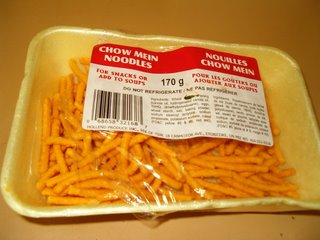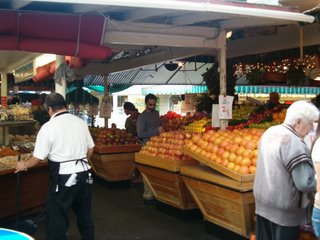
I used a recipe from Claudia Roden's New Book of Middle Eastern Food from Khubz, or pita bread. Luckily, the dough can also be used for Mana'eesh, a sort-of Arabic pizza, with a savory thyme and sesame topping. Hubby and I procured a big bag of Zatar (thyme) yesterday, and I wanted to give him a treat of freshly baked Mana'eesh.

ingredients:
1 tbsp active dry yeast
2 1/2 cups luke warm water
1/4 tsp sugar
About 6 cups all purpose flour
1 1/2 tsp salt
3 tbsp extra virgin olive oil
More olive oil for frying
About 1 cup Zatar*, mixed with 3/4 cup extra virgin olive oil
1. Mix together the sugar with 1/2 cup water. Dissolve the yeast in this sugar water, then set aside for about five minutes, until it begins to froth. Pour into the mixer bowl, along with the remaining water.
2. Using the paddle attachment, mix in 3 cups of flour, one cup at a time. Remove the paddle and allow to rest for ten minutes.
3. Using the dough hook, mix in the salt and oil. Add the remaining flour gradually, a few tablespoons at a time, until a the dough forms a ball. (you may have leftover flour.)
4. Continue to knead with the doughhook for about 10 minutes. The dough should be soft to the touch, but spring back when you poke it!
5. Remove the dough to a greased bowl, and turn to coat it with oil. Cover with a cloth or Saran wrap. Allow to rise 2 hours in a warm place, or until doubled in bulk.
6. Preheat the oven to 500 degrees Fareinheit and place a baking sheet in the center of the oven.
7. Punch the dough down and divide in two. One for Mana'eesh and one for pita. First, for the pita, divide the dough into 8 equal pieces, and roll them out to about 5 inches in diameter. Cover a soft cloth and set aside to rise again, for another twenty minutes. Meanwhile, for the mana'eesh, roll out the other half of dough to about 1/4 inch thick. Grab a large glass and cut out circles. Repeat with leftover dough. Cover the circles as you go with a soft cloth.
8. Using the rolling pin, roll out the circles until they are as thin as possible without breaking. Stretch with your hands too!
9. Place a frying pan on medium-high heat. Spread 1/2 to 1 tbsp prepared zatar onto the dough. Heat 2 tsp oil in the frying pan and drop the dough onto the pan, zatar-side up.
10. Once the dough has crisped up on the bottom and bubbles begin appearing on the surface, (about 2 minutes) place it into the oven on the baking sheet. Pop any very large bubbles. Bake in the oven for approximately four minutes. Continue to prepare the rest of the dough!
This recipe makes about 20 5-inch "pizzas" of dough. They freeze exceptionally well, and I eat them all the time as a mid-morning or afternoon snack. I put a frozen disc on top of my two-slice toaster and it tastes as good as it does fresh!
Back to the pita bread: after twenty minutes, they should have risen some more. Bake them for 5 minutes on the hot baking sheet, about 2 or 3 at a time. Once they come out of the oven, wrap them in a towel to prevent hardening. They will be puffed up and soft and fluffy on the inside! Yummy!

* "Zatar" translates in Arabic to "thyme" but it is also used to refer to the mixture of 1 part dried thyme with 1 part toasted sesame seed and 1/4-1/3 part sumac. This is what you want whne making Mana'eesh. Check when you are buying it whether or not it has sesame seeds. Otherwise, just buy the sesame seeds as well and mix it up!
Pita bread
food
baking






